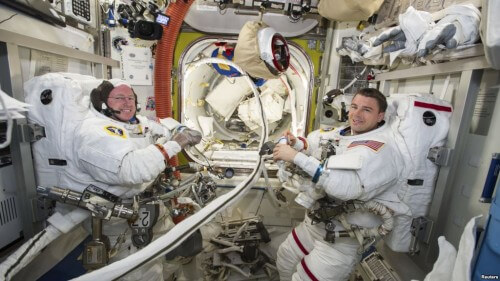NASA has provided licenses to private companies to help non-space scientists conduct experiments on the International Space Station

With the announcement of the International Space Station as a US National Laboratory in 2005, researchers were given opportunities to exploit the unique microgravity platform in ways that had not previously existed.
The latest video in the Benefits for Humanity series http://www.nasa.gov/mission_pages/station/research/benefits/index.html explains how access to space has changed, and how these changes benefit everything from medicine to materials developed here on Earth.
"But it wasn't always easy to get to space," said Stephanie Murphy, president of Alpha Space, one of the application and hardware suppliers to the national laboratory.
The Center for the Advancement of Science in Space (CASIS) ( ) will connect investors and researchers, and facilitate the partnership that allows them to take advantage of the laboratory in orbit without being space experts themselves.
"Part of our mission is to help guide users who are not traditional space scientists who want to bring these innovative developments from their traditional laboratories here on Earth to become an extraordinary and important asset in space," said Greg Johnson, president of CASIS.
The National Laboratory offers a unique environment to carry out research that allows the development of not only medicines, but also the development of products in a wide variety of industries that may not have yet realized the benefits of using the space station for research. This research could have profound effects on life on Earth.
"This opening will create a new economy, a sustainable market for services, commercial products, and increase competition." said Jeff Manber, CEO of NanoRacks, also a supplier of equipment to the National Laboratory. "There is no limit to what we can do in a few years." added
An explanation of the National Laboratory on the International Space Station
For the NASA news and video

One response
The whole "microgravity" thing was an excuse to invest billions in the space station. The real reasons were a. continue to operate the NASA mechanism, b. To chaperone the senators from the countries where NASA operates, c. Added national pride, and d. Improving the technology of holding people in space. Only the last two goals are legitimate to me. But really funny is the microgravity thing. We were told that perfect crystals can be grown in microgravity and that this way we will reach excellent crystals for microelectronics and medicine. But it turns out that the opposite is true - crystals do not grow cleaner in microgravity, and only at high acceleration in centrifuges do you get better crystals (fewer dislocations). But this is not necessary either - you arrive at crystals clean enough for all needs in normal gravity.
Really reminds me of the American plan to turn the buildings where atomic bombs were made, and in which there were about 60 kg of plutonium oxide (the strongest poison known to us) scattered like dust in every corner, into a technological center. Right now all these structures are sealed in the hope that they will remain sealed for at least 10 million years because someone sane realized that it is simply impossible to clean them, after several billions of dollars have been burned. So also regarding the space station, someone, who does not understand anything except politics, throws nonsense and pours money in planning that some of the money will go to his voters.